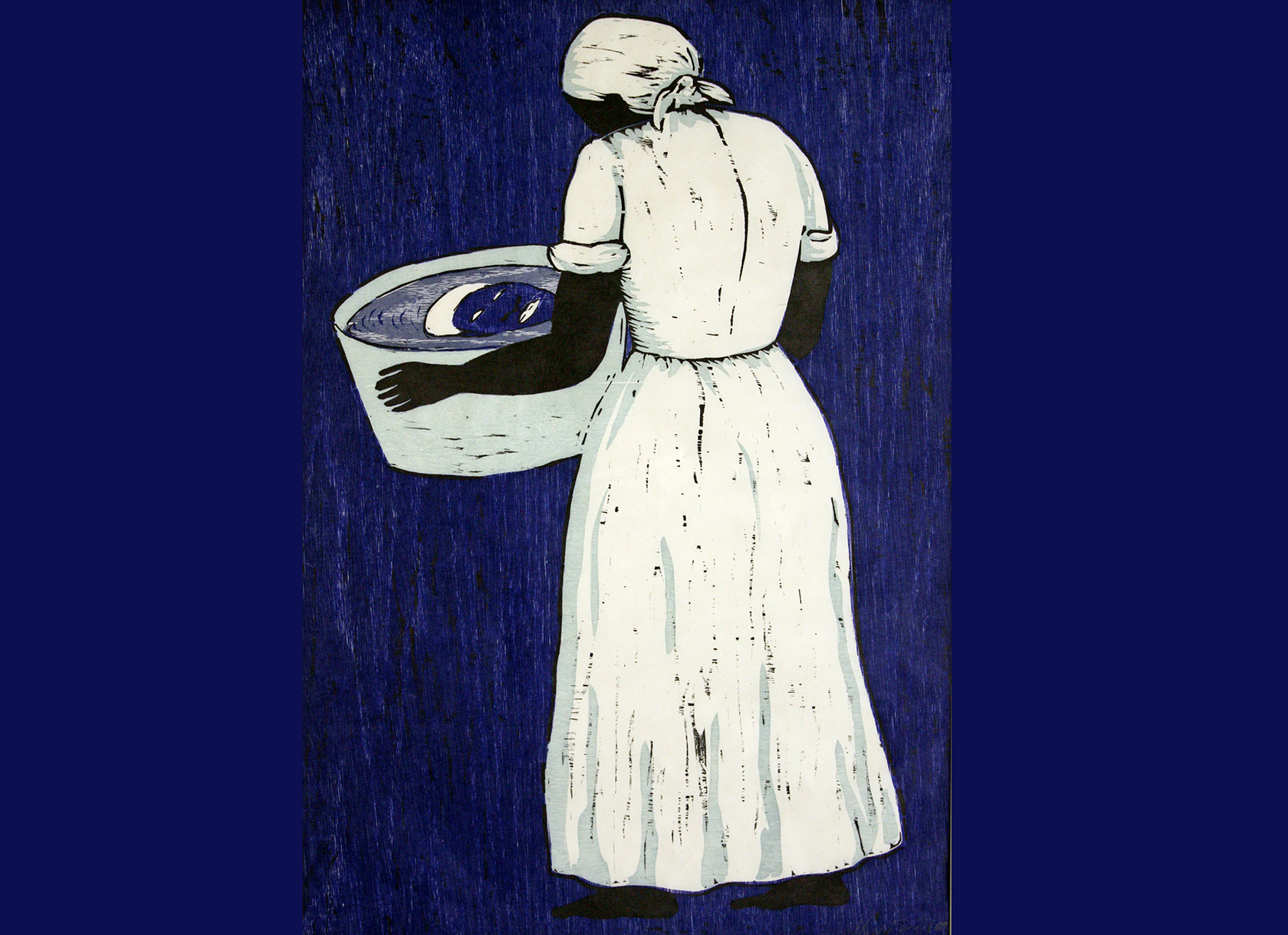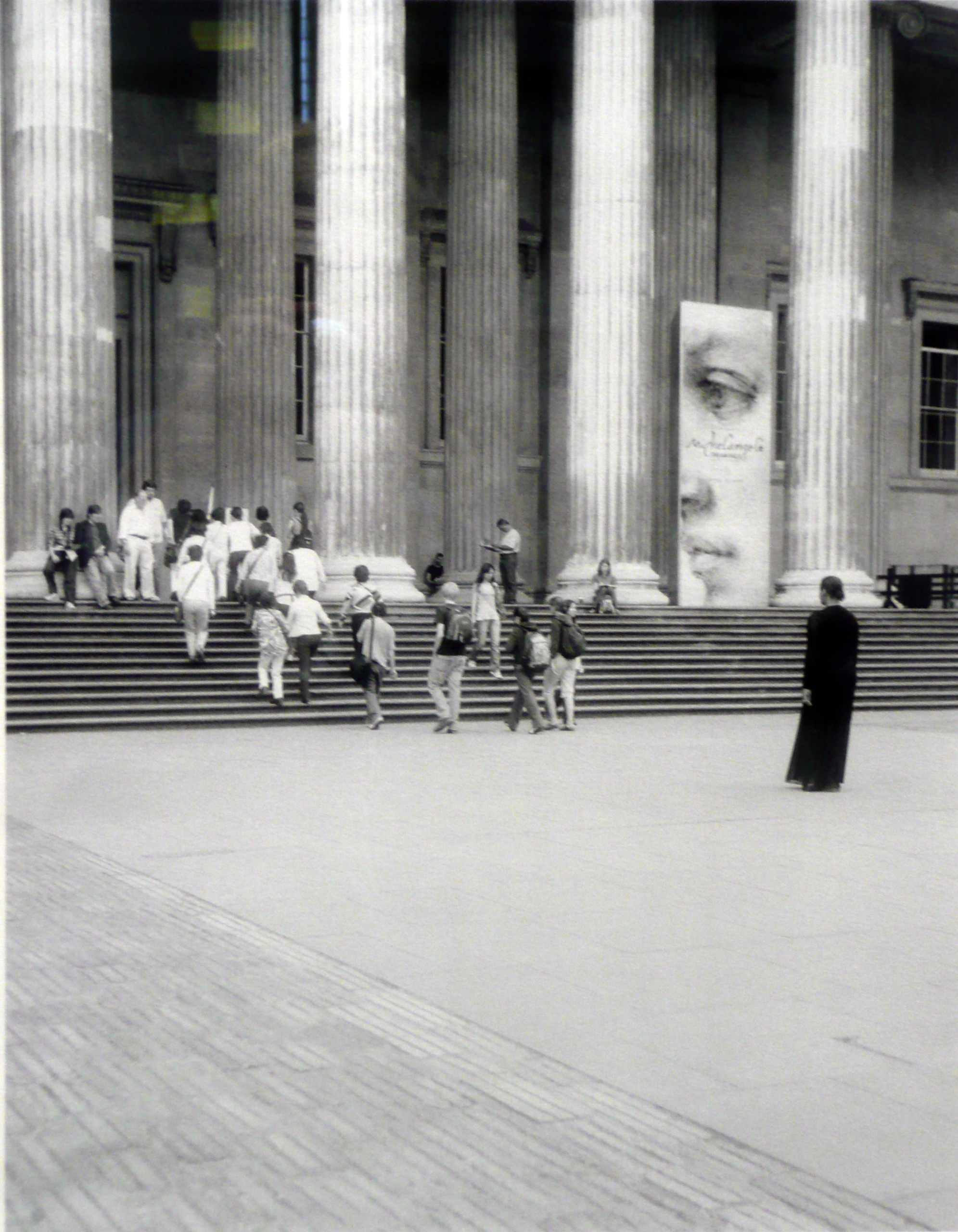
Student interns at the Ruth Chandler Williamson Gallery wear many hats. During their 2019–20 internships, Ludwig intern Annabel Lind ’22 and Turk intern Miriam Bankier ’20 helped organize the sprawling archives of the gallery’s permanent collection, assisted with the College’s 76th Ceramic Annual (the longest running ceramics show in the country), and curated their own exhibition from the collection.
“Our interns have the rare opportunity to organize exhibitions from the Scripps collection,” notes Mary MacNaughton, Gabrielle Jungels-Winkler Director of the Ruth Chandler Williamson Gallery. “For nine years, our staff has assisted them as they develop a theme, write about selected works, and display them on campus. This year, because of the pandemic, Miriam and Annabel’s exhibition is virtual, but it is no less compelling, especially in this time when so many yearn for cultural experiences.”
The interns’ digital exhibition, “The Back Story,” features selected photographs and a print that reveal the expressive character of the human back as well as interpretive texts about the pieces. “Throughout our internships, Annabel and I spent most of our Friday mornings helping organize art works in storage,” recalls Bankier, a double major in studio art and legal studies. “I was fascinated by the variety of works I saw and imagined the stories behind each artwork. As we brainstormed together, we tried to think of works we felt drawn to, and some of them showed backs. This inquiry brought us to ask what stories the back can tell. We wanted to show the artworks we were drawn to while looking at them from an unusual perspective.”
“My favorite work from the show is Marion Post Wolcott’s ‘Coal miner’s daughter carrying home can of kerosene to be used in oil lamps. Pursglove, Scott’s Run,’” says Lind, an environmental analysis major minoring in art with a ceramics concentration. “Despite the subject being at a distance, the young girl’s posture says so much about her experience in the Great Depression. It gives me quite an emotional response seeing the burden placed on a child in a time of enormous economic struggle, especially given how isolated she is in the shot. It seems as though the weight of the world rests on her tiny shoulders as she struggles to carry the kerosene cans down the road.”
“To me, her back shows struggle but also strength and determination in carrying a heavy load,” adds Bankier.
“The collection includes unforgettable photographs of life during stressful times, from Dorothea Lange and Marion Post Wolcott’s Depression-era scenes of migrants and workers to Leonard Freed’s 1970s views of police and prisoners in Manhattan and Alison Saar ’78’s and Carrie Mae Weems’ solitary women,” MacNaughton says. Saar’s print, “Washtub Blues,” for example, conveys the weariness of a woman through her bowed back as she gazes at her reflection in a water basin.
MacNaughton emphasizes the value of the professional experience that interns gain at the Williamson Gallery, which poises them for graduate school admission and to begin careers in the visual arts.
“The art community at Scripps is very strong,” says Lind. “Through my internship and classes, I feel as though I have a strong support system that is invested in my success upon my inevitable graduation.”
As for Bankier, who was offered a summer internship at the Guggenheim in Venice, Italy, this summer and was also offered admission into an MFA program in arts education in the fall, she’s keeping her options open. “Whatever comes next, I hope to use both my studio art and legal studies major to implement societal change while creating and understanding art,” she says.


